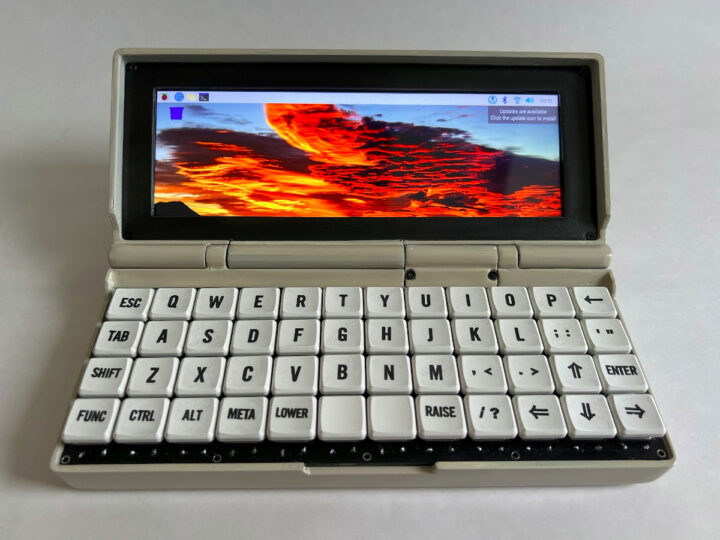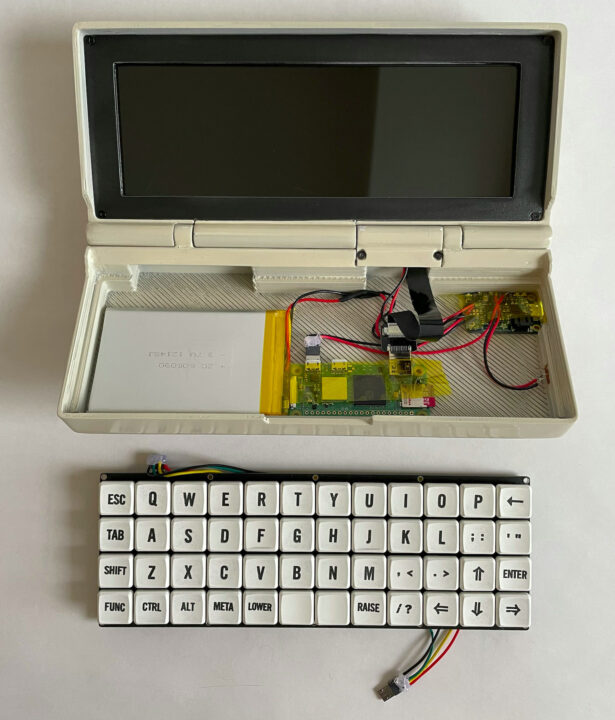The Penkesu Computer is a DIY handheld PC powered by a Raspberry Pi Zero 2 W SBC, and mostly comprised of off-the-shelf parts including a 7.9-inch display from Waveshare, replacement hinges for the Gameboy Advance SP, a 48-key mechanical keyboard fitted with Kailh low profile Choc V1 switches, and so on.
Penk also happens to have designed the CutiePi tablet with Raspberry Pi CM4, and designed the Penkesu Computer ( in Japanese) as a side project without having to “worry too much about commercial viability” and as a way to remind himself why he started tinkering.
Penkesu Computer handheld PC specifications:
- SBC – Raspberry Pi Zero 2 W with Broadcom RP3A0 SiP with Broadcom BCM2710A1 quad-core Cortex-A53 processor @ 1.0 GHz, 512MB RAM, MicroSD card slot
- Display – 7.9-inch IPS display with capacitive touch screen, 1280x 400 resolution, connected over HDMI via flat cable through an Adafruit adapter
- Keyboard – 48-key mechanical “Koda” keyboard with replaceable key caps, Arduino Pro Micro board.
- Battery – 3.7V LiPo battery charged via Adafruit PowerBoost 1000C micro USB charger board.
The only things that are custom-made for the project are the 3D printed enclosure and the QMK firmware for the open-source hardware Koda keyboard that takes an Arduino Pro Micro board. You’ll find all you need to build your own on the Github repository for the project.
The Penkesu Computer can run any OS supported by the Raspberry Pi Zero 2 W. The second micro USB port is not used, and there appears to be enough space to add a thin USB flash drive for example. Since the handheld PC relies on off-the-shelf parts it’s probably one of the easiest projects around. You’d also have to print the 3D parts by yourself or through a 3D printing service, have the keyboard PCB manufactured, and solder some components.
Penk says there are “no immediate plans on selling kits, or making Penkesu Computer mass producible”, so it will probably stay a DIY project unless there’s somehow a huge demand for this type of hardware with such a wide screen that will be unpractical for most use cases.
Via Liliputing and Tom’s Hardware.

Jean-Luc started CNX Software in 2010 as a part-time endeavor, before quitting his job as a software engineering manager, and starting to write daily news, and reviews full time later in 2011.
Support CNX Software! Donate via cryptocurrencies, become a Patron on Patreon, or purchase goods on Amazon or Aliexpress






